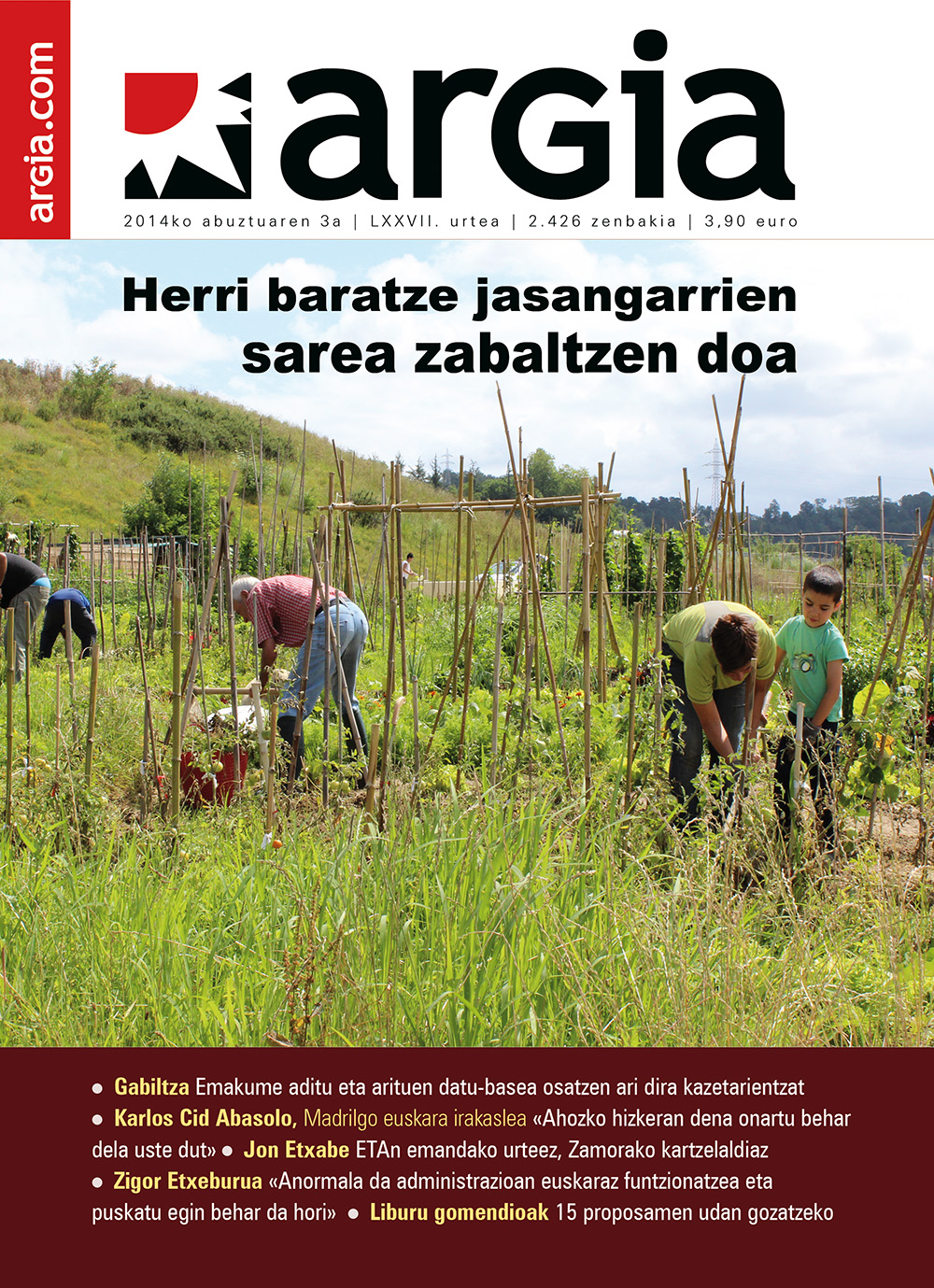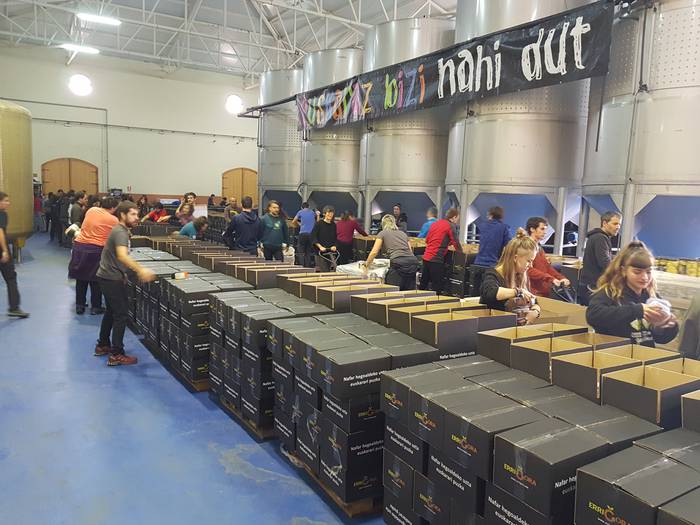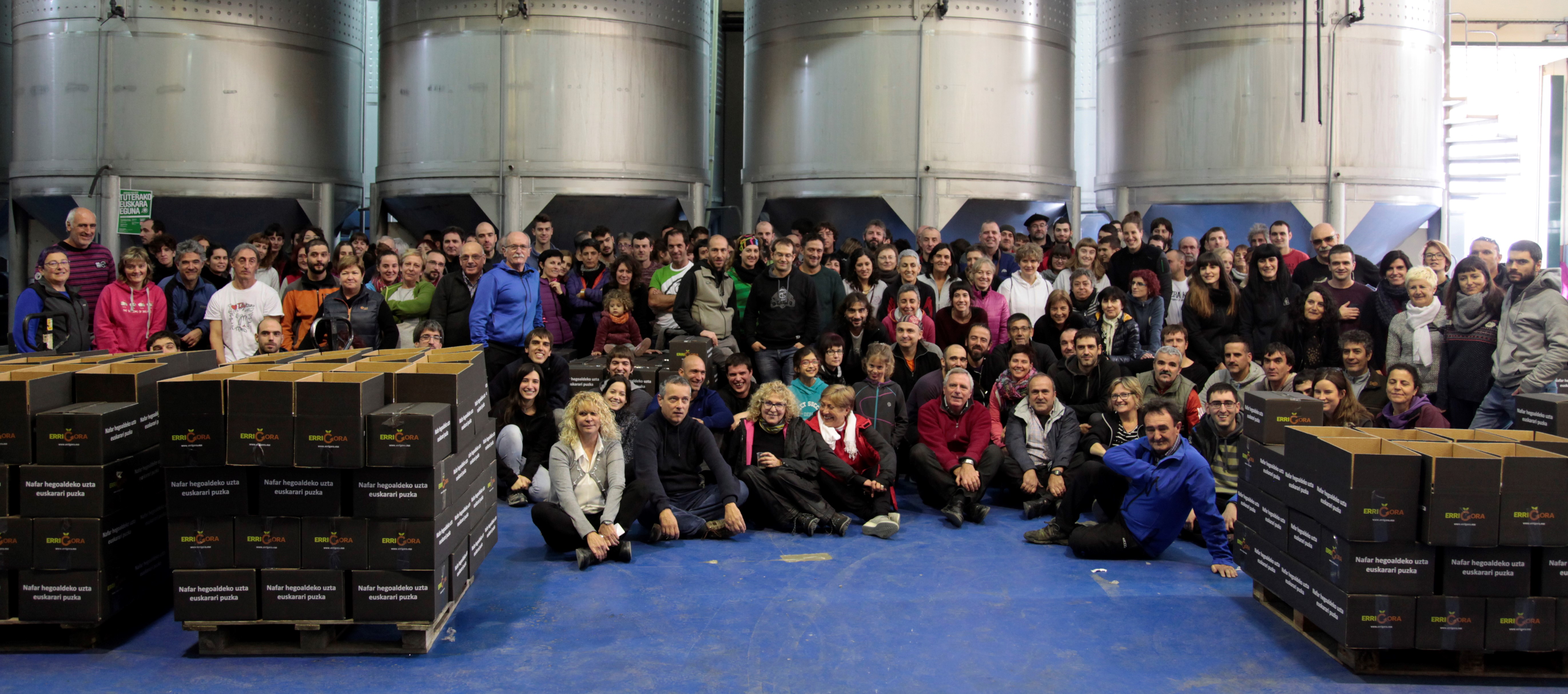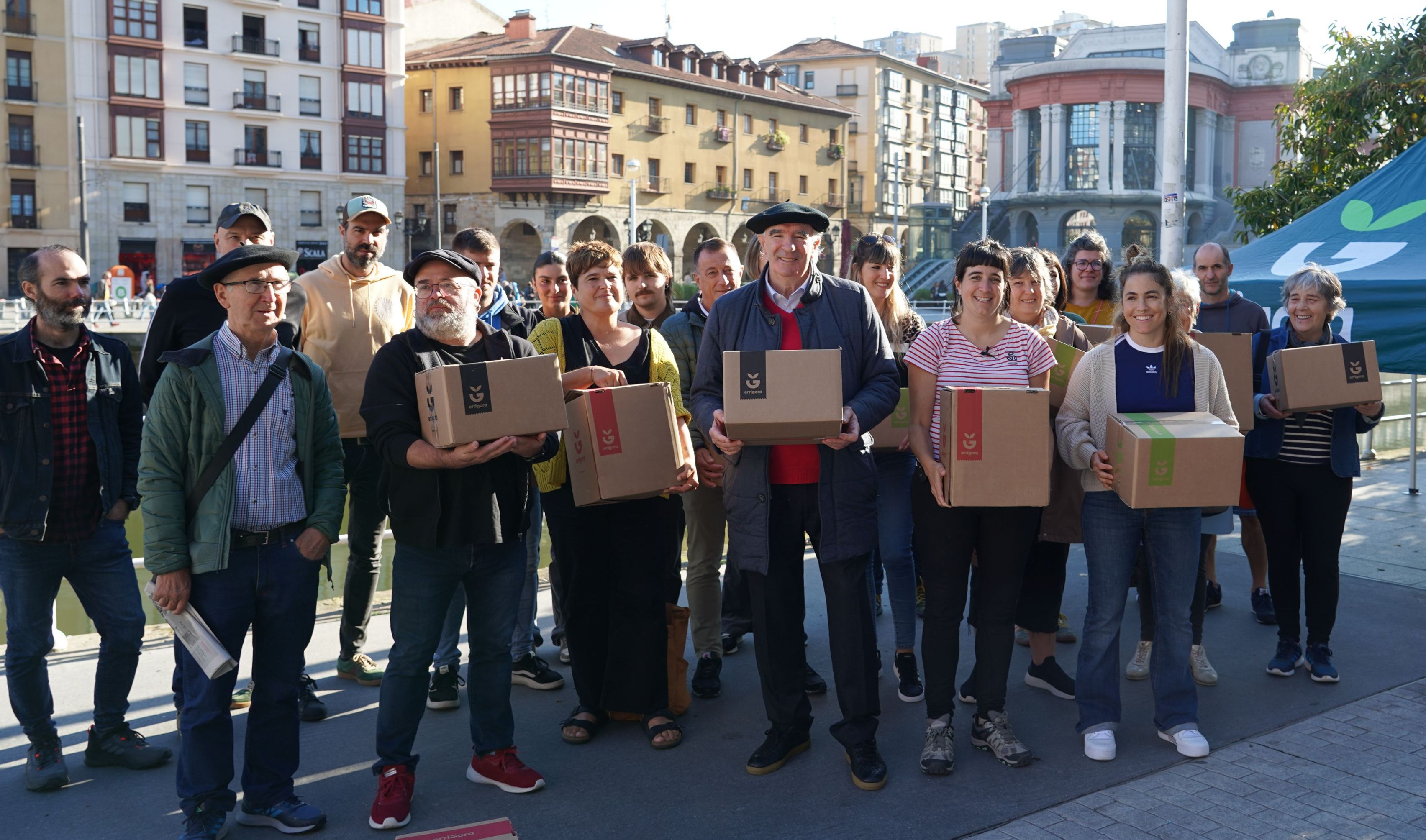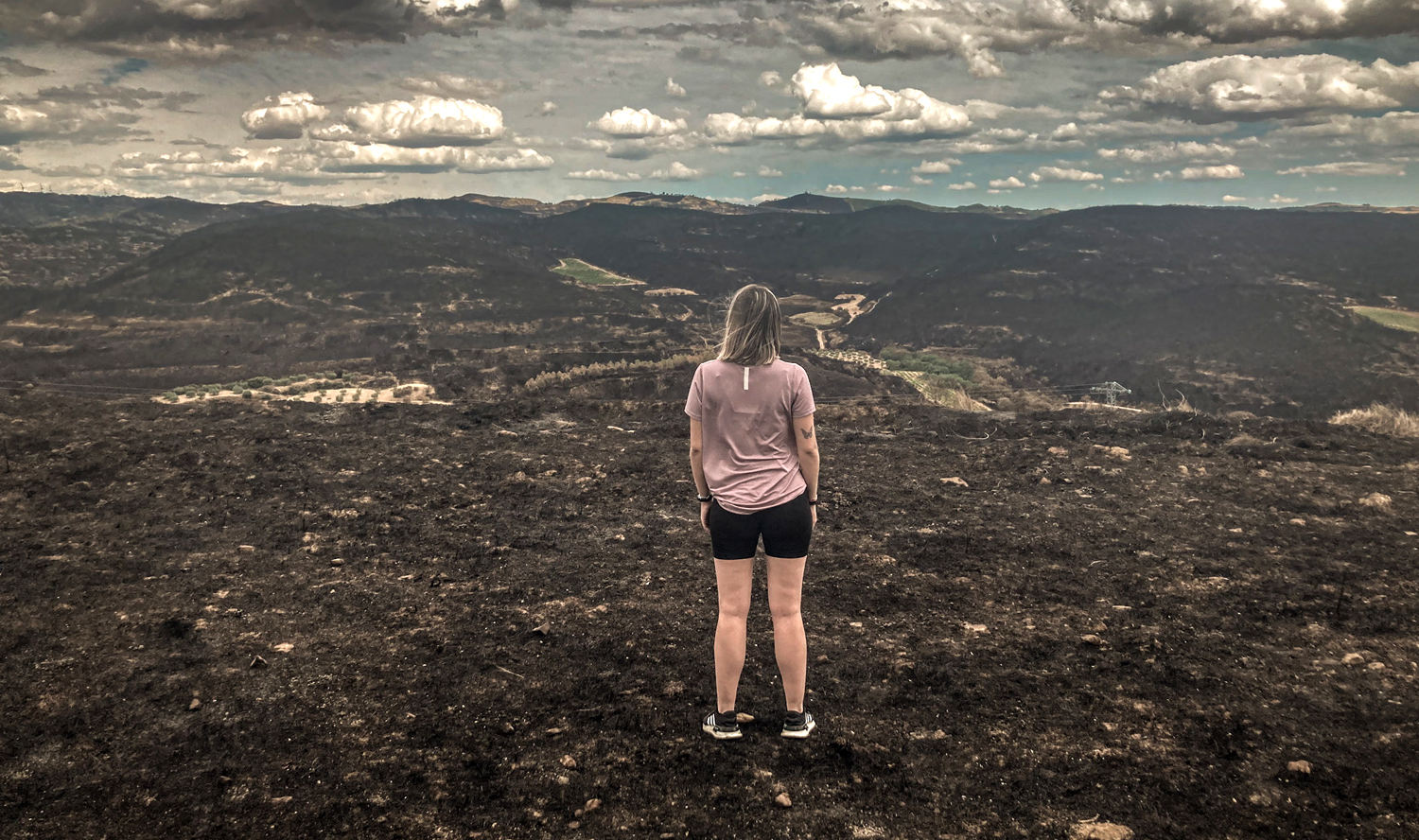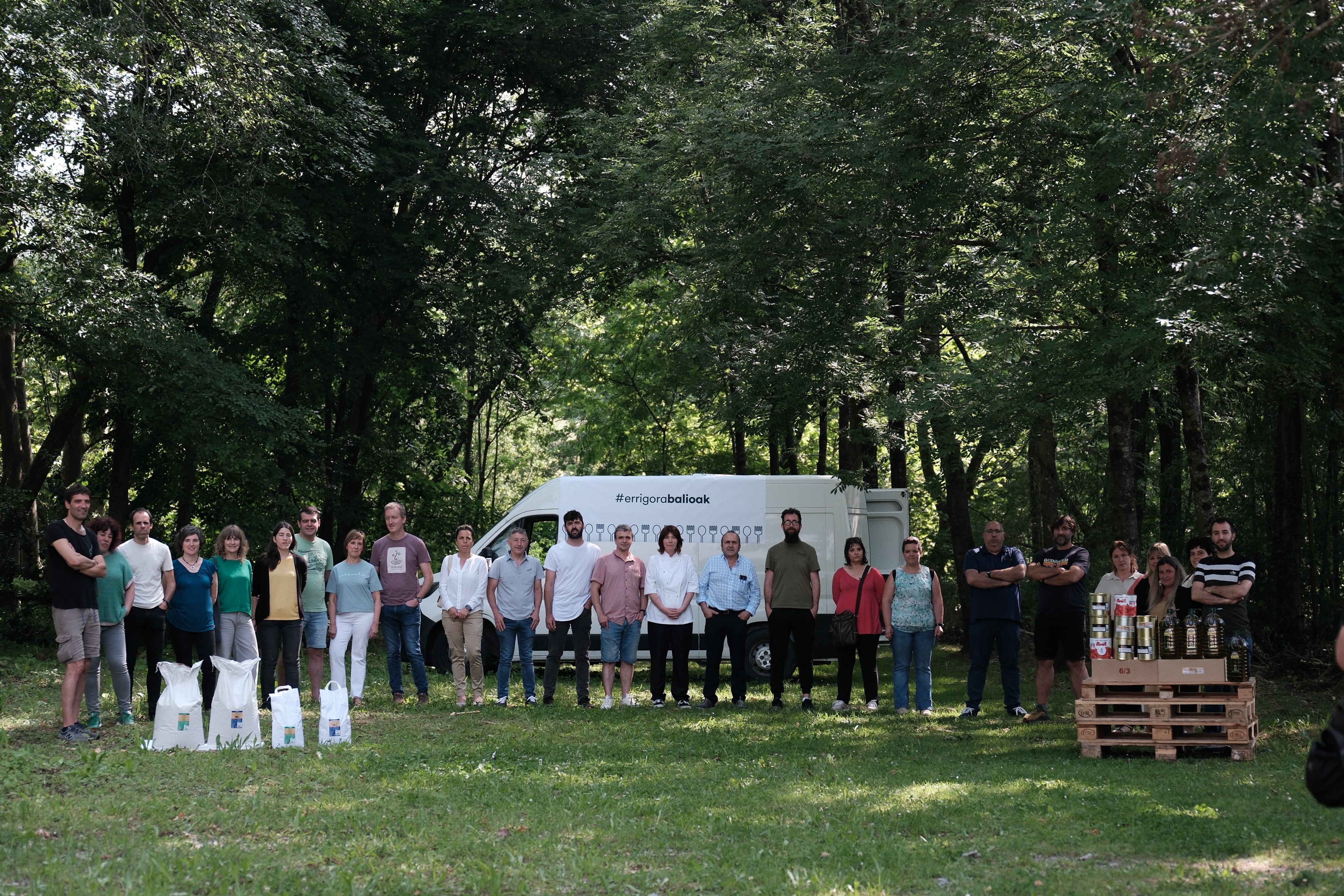Looking for vestiges of the past in Murugain
- Mount Murugain has a rich history. During the Iron Age there was a village and in the War of 1936 a trench to prevent the passage to the Francoists. The area's neighbours have made an auzolan to recover the traces in the last three overnight stays. In addition to putting the place in place, the aim is to make it open to the public.
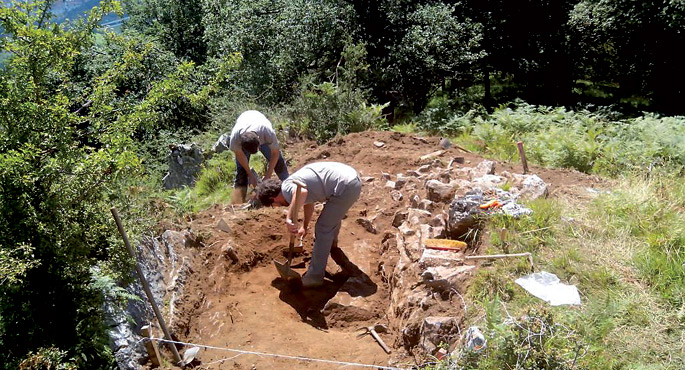
On the border between Álava and Gipuzkoa is the high of Murugain, with Arrasate, Aretxabaleta and Aramaio on their backs. It is a mountain rich in historical heritage and contains remains of a village of the Iron Age and a trench of the War of 1936. Unfortunately, they were not kept as they should and over time the land was covered. In the summer of 2011, an auzolan was started to recover them, driven by the City Hall of Aramaio, the Aramaio Heritage Recovery Group and the Ondare Babes Association. Since then, archaeological performances have been organized every year and then guided visits have been made to the area. In July of this year, for the first time, the lands of Aretxabaleta and Arrasate/Mondragón have been excavated.
During the War of 1936, the trenches were built in several hills of the Upper Must, in order to hinder the francoists who headed from Álava to Bizkaia. Thanks to the excavation carried out in recent years, it has been known that the Iron Age Wall was used for the supply of trenches. It has also been possible to obtain information on the way of life of the time of war, thanks to waste. Thus, food cans, bullet covers and other warlike devices have been recovered and relocated in the area.
Archeologists of the Society of Sciences Aranzadi detected in 1988 the town of the Iron Age in Murugain, discovering its tools. However, in 2005, when land was being studied to build the telephone antenna, they realized that there was a wall. Recovery, however, is not just any kind of work. It occupies a large space and is deteriorated. However, ceramic specimens and hand mills have been located near the site, among other objects of the time. One of the following challenges is to find the village that housed the wall, in order to analyze its way of life and the homes in which it rested. In any event, it remains to be seen whether they are going to get subsidies for this in future. We therefore do not know to what extent they will be able to deepen the project.
The importance of dissemination
So far, refurbishment work has mainly focused on works. However, the main objective is the dissemination of historical heritage among citizens. Each year, once the sessions of the auzolan have been completed, talks and guided visits have been made to present the finding. The documentation work is supported by the cultural association Intxorta 1937. The City Hall of Aramaio has underlined the importance of “giving voice to those who have gone through there”.
The Heritage Recovery Group has carried out other “more modest” initiatives in auzolan than Murugain. Old roads, stairs and fountains, among others, have been conditioned. For the future, it is planned to continue with this type of project, although the work of Murugain will be resumed every July. Because among all there is no richer heritage than the recovery and expansion of what the previous ones left.
Martxoaren 10etik 26ra izango da udaberriko kanpaina. 'Beste modura, denona de onura' lelopean arituko dira gertuko ekoizpena, banaketa eta kontsumoa babestu eta sustatzeko, ager zonaldean euskara hauspotzen duten bitartean. Apirila amaieratik aurrera jasoko dira... [+]









